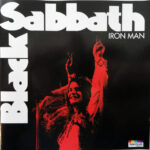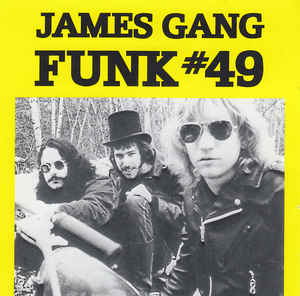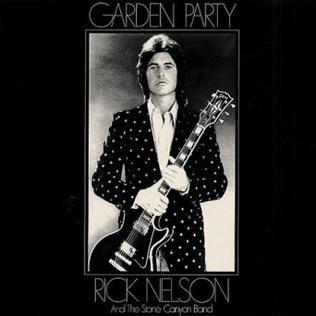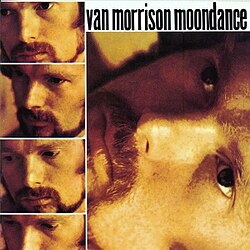 Black Sabbath’s “Iron Man” is more than a song—it is a sonic monument that helped define heavy metal and continues to resonate across generations of fans and musicians. Released in 1970 on the band’s legendary Paranoid album, “Iron Man” showcased Black Sabbath’s ability to fuse crushing riffs, dark themes, and narrative storytelling into a cohesive musical experience. Its iconic guitar lines, thunderous rhythm, and ominous tone made it a blueprint for heavy metal and cemented the band’s place as pioneers of a genre that would dominate rock music for decades.
Black Sabbath’s “Iron Man” is more than a song—it is a sonic monument that helped define heavy metal and continues to resonate across generations of fans and musicians. Released in 1970 on the band’s legendary Paranoid album, “Iron Man” showcased Black Sabbath’s ability to fuse crushing riffs, dark themes, and narrative storytelling into a cohesive musical experience. Its iconic guitar lines, thunderous rhythm, and ominous tone made it a blueprint for heavy metal and cemented the band’s place as pioneers of a genre that would dominate rock music for decades.
Origins of a Heavy Metal Classic
The conception of “Iron Man” is rooted in the early creative collaboration between Black Sabbath members Tony Iommi, Geezer Butler, Ozzy Osbourne, and Bill Ward. Tony Iommi’s distinctive guitar tone, born from his resourceful adaptation to a factory accident that severed the tips of his fingers, became central to the band’s sound. This unique approach allowed him to craft riffs that were dark, heavy, and unmistakably powerful.
The song’s lyrical foundation was written by bassist Geezer Butler. Inspired by science fiction and comic book imagery, Butler crafted a story of a man transformed into metal, estranged from humanity, and ultimately exacting revenge on those who wronged him. The narrative of “Iron Man” combines mythic storytelling with a modern, almost industrial perspective, perfectly complementing the music’s mechanical and grinding character.
Ozzy Osbourne’s vocal performance brought the story to life. His haunting and dramatic delivery carried a sense of doom and inevitability, transforming the song into a narrative experience rather than just a musical performance. Each verse reads like a chapter in a cautionary tale, with Osbourne’s voice bridging the gap between listener and character.
The Anatomy of a Riff
The opening riff of “Iron Man” is one of the most recognizable in rock history. Tony Iommi’s deliberate, heavy guitar line, played in a downtuned key, sets a tone of foreboding and power. The riff’s chugging rhythm and descending movement evoke the image of a mechanical juggernaut, perfectly aligning with the song’s lyrical subject—a man transformed into an unstoppable metallic force.
Drummer Bill Ward provides a relentless foundation, with thunderous beats and well-placed cymbal crashes emphasizing the song’s ominous atmosphere. Geezer Butler’s bass lines are not mere accompaniment; they mirror and enhance Iommi’s riffs, creating a dense, interlocking musical texture that feels simultaneously aggressive and hypnotic.
The song’s structure is deceptively simple: verses, choruses, and an instrumental section coalesce seamlessly, allowing the riffs and vocals to dominate without unnecessary embellishment. This simplicity contributes to the song’s enduring appeal: it is instantly recognizable, endlessly playable, and endlessly influential.
Lyrical Themes and Narrative Power
“Iron Man” tells a story with clarity and theatricality. The lyrics follow a man who, after traveling to the future and witnessing humanity’s destruction, is turned into a metallic being as punishment for his absence. When he returns to the present, he is rejected and mocked, leading him to enact vengeance on mankind.
The narrative is both cautionary and tragic. Themes of isolation, transformation, and retribution resonate on multiple levels: as a metaphor for alienation, as a commentary on technological dehumanization, and as a compelling myth in its own right. The combination of narrative lyricism and musical intensity gives the song a timeless quality, allowing listeners to experience both story and spectacle simultaneously.
Ozzy Osbourne’s delivery amplifies the drama. His voice shifts between ominous monotone narration and emotional crescendos, effectively portraying Iron Man’s transformation from human to mechanical avenger. This dynamic vocal performance is a defining characteristic of the song and sets a precedent for the theatricality often associated with heavy metal vocals.
Cultural and Musical Impact
“Iron Man” arrived at a pivotal moment in rock history. The late 1960s and early 1970s were marked by experimentation and boundary-pushing, with psychedelic rock, blues, and progressive influences dominating the musical landscape. Black Sabbath’s approach was a stark departure: dark, heavy, and uncompromisingly grounded in riff-driven power.
The song helped codify the elements of heavy metal: downtuned guitars, powerful riffs, dramatic storytelling, and an emphasis on mood and atmosphere. Its influence can be traced through every era of metal that followed, from traditional metal bands like Judas Priest to thrash pioneers like Metallica, and even to modern heavy rock and doom metal acts.
Beyond music, “Iron Man” penetrated pop culture, largely thanks to its iconic title and narrative. It inspired comic book imagery, appeared in movies, and eventually became synonymous with Marvel’s superhero of the same name—though the song predates the character’s cinematic rise by decades. The track’s heavy, mechanical feel perfectly captured the essence of a towering, unstoppable metal figure, demonstrating the song’s visual and conceptual power.
Live Performances and Stage Presence
“Iron Man” also became a live staple for Black Sabbath, showcasing the band’s ability to translate studio heaviness into visceral, audience-engaging performances. On stage, the song’s riffs and rhythm section create a palpable sense of tension and release, with Bill Ward’s drumming driving the song’s relentless march forward.
Fans responded to the combination of narrative and sound, often reacting with awe and excitement to Iommi’s riffs and Osbourne’s commanding presence. The song’s theatrical quality made it a favorite for live audiences, further cementing its role as a cornerstone of the band’s identity. Over the decades, “Iron Man” has remained a highlight of Black Sabbath concerts, inspiring countless covers and tributes by other artists.
Recording Techniques and Production
The recording of “Iron Man” on Paranoid exemplifies early heavy metal production. Tony Iommi’s guitar tone, achieved through downtuning and a combination of amplifiers, produced a thick, saturated sound that became a hallmark of the genre. The production, handled by Rodger Bain, emphasized the weight and presence of each instrument, creating a dense sonic landscape without sacrificing clarity.
Bill Ward’s drum sound is prominent and impactful, particularly the snare and toms, which contribute to the song’s mechanical, relentless feel. The mix balances power and precision, allowing each instrument to contribute to the overall heaviness without clutter. Ozzy Osbourne’s vocals are treated with minimal effects, enhancing their immediacy and drama while preserving the raw emotion of his performance.
Influence on Future Generations
The impact of “Iron Man” extends far beyond its immediate success. It has been cited by countless musicians as a pivotal influence, inspiring bands across heavy metal, hard rock, and even alternative and punk genres. The song’s riff-driven structure, narrative storytelling, and dramatic dynamics became foundational elements of metal songwriting.
“Iron Man” also played a role in legitimizing heavy metal as a serious artistic form. At a time when critics often dismissed loud, aggressive rock as juvenile or chaotic, Black Sabbath demonstrated that heaviness and darkness could be harnessed to create sophisticated, enduring music. The song’s combination of storytelling, atmosphere, and technical craft provided a model for artists seeking to balance intensity with artistry.
Pop Culture Legacy
Over the decades, “Iron Man” has permeated popular culture in multiple ways. Its riffs have appeared in commercials, films, video games, and television shows. The song’s narrative has influenced storytelling in music, comics, and cinema, demonstrating how a single track can extend far beyond the confines of a record.
The song’s association with the Marvel superhero in the 21st century has only amplified its cultural resonance. While the character Iron Man and the song are not directly connected in origin, the parallel between Black Sabbath’s metallic avenger and Tony Stark’s armored hero is impossible to ignore. The track now functions as both a musical touchstone and a symbol of larger-than-life power, transformation, and technological awe.
Musical Structure and Enduring Appeal
The song’s structure contributes to its lasting appeal. Its verse-chorus format allows for tension and release, while the instrumental sections give the band space to showcase musical prowess and create dramatic interludes. Iommi’s guitar riffs are memorable, instantly identifiable, and endlessly repeatable—qualities that have helped the song maintain relevance in an era of rapid musical change.
The combination of simplicity and power makes “Iron Man” accessible yet profound. Listeners can enjoy it as a catchy, heavy anthem or as a complex, layered composition with narrative depth. This duality has contributed to its longevity, allowing it to appeal to casual fans, musicians, and critics alike.
Critical Reception and Legacy
Upon its release, Paranoid and the track “Iron Man” received acclaim for their innovation, heaviness, and musicality. Critics praised Black Sabbath for creating a new sonic language, one rooted in darkness, power, and thematic ambition. The song’s riffs, narrative, and vocal performance have become textbook examples of heavy metal excellence.
“Iron Man” has been covered, sampled, and referenced by countless artists, from metal bands like Metallica to pop culture moments in television and film. Its influence is seen in the continued prominence of riff-driven metal, in concept-driven songwriting, and in the theatrical presentation of heavy music.
Conclusion: The Song That Forged a Genre
“Iron Man” is more than a song on an album—it is a cultural artifact, a musical milestone, and a defining moment in the history of heavy metal. Black Sabbath’s combination of crushing riffs, narrative depth, and atmospheric production created a track that continues to inspire musicians, thrill audiences, and resonate with fans worldwide.
The song’s legacy is enduring because it captures the essence of heavy metal: power, darkness, narrative, and emotion. Its riffs are instantly recognizable, its story is compelling, and its performance is legendary. From its creation in a London studio to its role as a cultural icon, “Iron Man” has left an indelible mark on music history.
Nearly fifty years after its release, “Iron Man” remains a benchmark for heavy metal excellence. Its influence on the genre, its narrative complexity, and its unforgettable sound ensure that Black Sabbath’s masterpiece will continue to define and inspire music for generations to come.
“Iron Man” is more than a song; it is the blueprint for heavy metal, forged in riffs and bound in cultural immortality.


